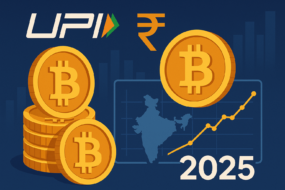
Altcoin season – a period when alternative cryptocurrencies outperform Bitcoin – is often hyped as a golden investment opportunity. But is it a guaranteed phenomenon or merely an illusion fueled by market sentiment? Understanding the dynamics of altcoin season and preparing effectively can make a significant difference in your investment journey. This blog will provide actionable insights to help you prepare, invest wisely, and minimize risk.
Key Takeaways:
- Preparation is required for altcoin season.
- Essential tips for analyzing altcoin trends.
- Effective strategies to minimize risk when investing in altcoins.
- The role of market sentiment during an altcoin rally.
- Importance of portfolio management and stop-loss settings.
What Does Preparation for Altcoin Season Entail?
Preparation for altcoin season involves more than just buying tokens and hoping for gains. Traders need a well-thought-out strategy that includes research, market analysis, and risk management:
- Research Projects: Understand the use cases, development activity, and community engagement of altcoins. Projects with strong fundamentals often perform well during rallies. Evaluate tokenomics, the team’s background, and the roadmap to identify sustainable projects.
- Market Timing: Identify key market cycles to optimize entry and exit points. Analyze historical patterns and study Bitcoin dominance – a crucial indicator of altcoin performance.
- Portfolio Allocation: Allocate investments strategically across different categories of altcoins, such as DeFi tokens, gaming coins, and layer-2 solutions. Balance your portfolio between high-risk and relatively stablecoins.
Want to dig deeper into choosing the right altcoins? Check out our guide on Top Altcoins to Buy Before the Bull Run.
What Do Traders Need to Know Beforehand?
Being prepared for the altcoin season requires knowledge of both market dynamics and the inherent risks:
- Liquidity: Ensure the tokens you invest in have sufficient market liquidity. Low-liquidity assets can be difficult to sell during market downturns, leading to significant losses.
- Volatility: Be prepared for sharp price swings. Altcoins are generally more volatile than Bitcoin, making them riskier but potentially more rewarding.
- Security: Use reputable exchanges and secure your wallets with multi-factor authentication and cold storage options. Always double-check wallet addresses when transferring funds.
- Regulatory Risks: Stay informed about regulatory developments, as changes in legislation can impact the value and usability of certain altcoins.
Understanding these basics will set a solid foundation for altcoin investments. Additionally, understanding how to buy and securely store cryptocurrencies is crucial. Explore our comprehensive guide on How to Buy Bitcoin in India to get started.
How Can You Analyze Altcoin Performance and Trends?
Spotting potential opportunities during altcoin seasons requires a combination of technical and fundamental analysis:
- Technical Analysis: Use indicators like moving averages, Relative Strength Index (RSI), and Bollinger Bands to identify entry and exit points. Chart patterns such as cup-and-handle formations and ascending triangles can signal bullish trends.
- Sentiment Analysis: Monitor social media platforms, forums, and news trends. Positive sentiment often precedes price surges. Tools like LunarCrush can help gauge social sentiment.
- On-Chain Data: Evaluate transaction volumes, active addresses, and wallet activities to gauge network activity. Metrics like Total Value Locked (TVL) in DeFi projects provide insights into market confidence.
- Comparative Analysis: Compare altcoin performance against Bitcoin and Ethereum to determine relative strength.
A well-rounded analysis approach can significantly improve your trading outcomes.
ALSO READ: 10 Common Crypto Trading Mistakes To Avoid
What Strategies Can Be Used to Minimize Risk While Investing in Altcoins?
Minimizing risk is crucial, especially in the volatile altcoin market. Here are some effective risk mitigation strategies:
- Diversification: Spread investments across multiple altcoins to reduce exposure to a single asset. Include a mix of high-risk and relatively stable altcoins.
- Position Sizing: Invest only what you can afford to lose. Avoid over-leveraging your trades, as this can amplify losses.
- Use of Stop-Losses: Protect your capital by setting stop-loss orders to automatically exit positions when prices fall below a certain level. Trailing stop-losses can help lock in profits.
- Dollar-Cost Averaging (DCA): Invest a fixed amount at regular intervals to mitigate the impact of price volatility. This approach helps average out the cost of investments.
- Hedging: Use stablecoins or short positions to hedge against potential losses during market downturns.
What Role Does Market Sentiment Play in Preparing for an Altcoin Rally?
Market sentiment can heavily influence altcoin prices. Understanding and leveraging sentiment indicators can help traders make informed decisions. Here are some sentiment indicators:
- Fear and Greed Index: This index measures the overall sentiment in the cryptocurrency market. Extreme fear can be a buying opportunity, while extreme greed may signal a potential correction.
- Social Media Trends: Sudden spikes in mentions of specific altcoins often precede price movements. Follow key influencers and crypto communities on platforms like Twitter and Reddit.
- News Events: Positive developments such as partnerships, upgrades, or regulatory approvals can trigger market rallies. Conversely, negative news can cause sharp declines.
- Community Engagement: Active and engaged communities often indicate a healthy project with growth potential.
ALSO READ: What is the Best Time to Trade in the Crypto Markets?
Key Portfolio Management Practices
Proper portfolio management ensures that you are not overexposed to a single altcoin, thereby reducing risk. Here are some practices:
- Diversification: Invest in a mix of high-cap, mid-cap, and low-cap altcoins to balance risk and reward. This approach helps mitigate losses from underperforming assets.
- Periodic Rebalancing: Adjust your portfolio based on market performance to maintain your desired allocation. Rebalancing ensures that you lock in gains and reduce exposure to overvalued assets.
- Stop-Loss Settings: Set appropriate stop-loss levels to protect gains and limit losses. Review and adjust stop-loss levels based on market volatility.
- Risk-Reward Analysis: Evaluate the potential upside and downside of each investment before committing funds.
- Tracking and Performance Analysis: Use portfolio tracking tools to monitor your investments and assess performance.
Mastering portfolio management is essential for long-term success.
Conclusion
While the idea of altcoin season may seem enticing, it’s not a guarantee of instant success. A disciplined approach that includes thorough research, market analysis, and risk management can help you navigate the altcoin landscape effectively. Always stay informed and adaptable to changing market conditions. Join the Official Mudrex Telegram Community to stay updated with the latest market insights and strategies, and download the Mudrex app to start trading now.
FAQs
What is an altcoin season?
Altcoin season refers to a period when alternative cryptocurrencies outperform Bitcoin in terms of price growth. It typically occurs when Bitcoin’s dominance in the market decreases.
How can I identify the start of an altcoin season?
Look for signs like Bitcoin dominance decreasing, a surge in altcoin trading volumes, and positive market sentiment. Monitoring on-chain data and social media buzz can provide early indicators.
Is investing in altcoins risky?
Yes, altcoins are highly volatile. Proper research, diversification, and risk management strategies are essential for successful investments. Ensure you only invest funds you can afford to lose.
What tools can I use to analyze altcoin trends?
You can use technical indicators like moving averages and RSI, sentiment analysis tools such as LunarCrush, and on-chain data platforms to track altcoin trends. Combining multiple analysis methods provides a more comprehensive view.
How does Bitcoin dominance impact the altcoin season?
Bitcoin dominance measures Bitcoin’s share of the total cryptocurrency market. A declining dominance often signals the start of an altcoin season as capital flows into alternative cryptocurrencies.
What role do stablecoins play during altcoin season?
Stablecoins can act as a hedge during market volatility. Investors often convert gains from altcoins into stablecoins to lock in profits and reduce exposure to price fluctuations.
How can I secure my altcoin investments?
Use secure wallets, enable multi-factor authentication, and store your private keys safely. Cold wallets provide an extra layer of security by keeping your assets offline.
Should I invest in new altcoins during the altcoin season?
Investing in new altcoins can be lucrative but also risky. Conduct thorough research on the project’s fundamentals, team, and market potential before investing.





